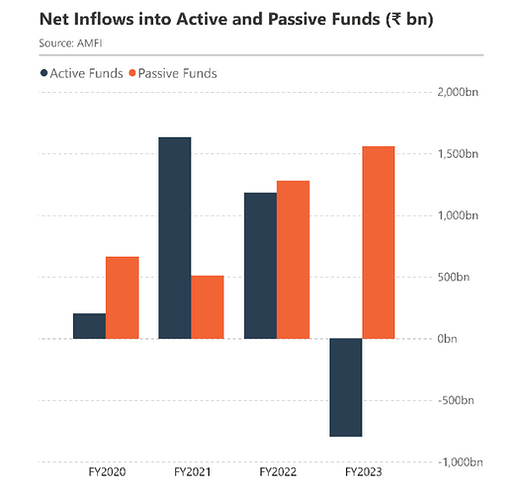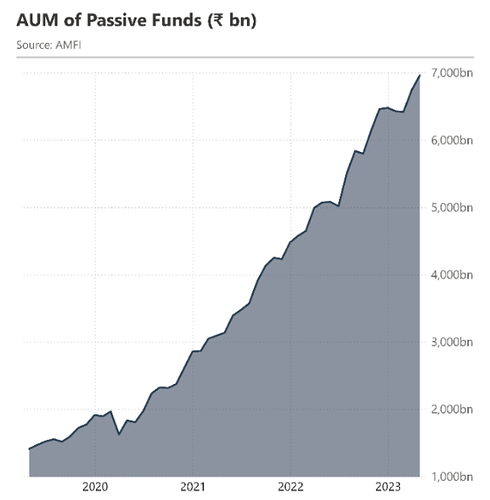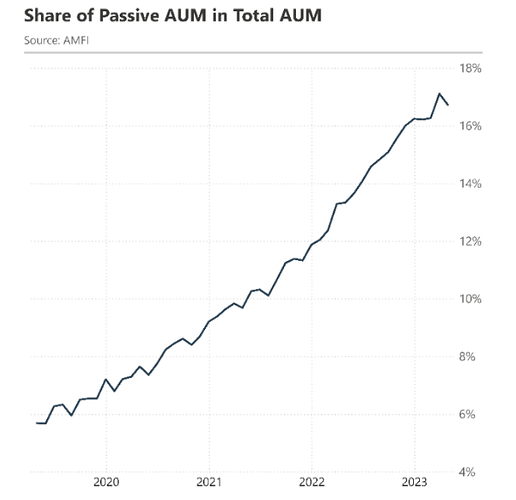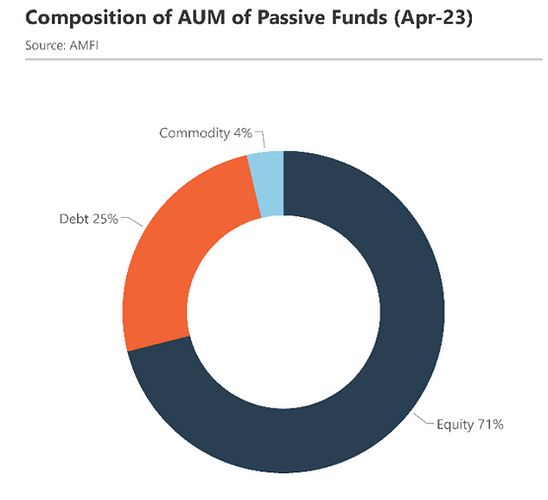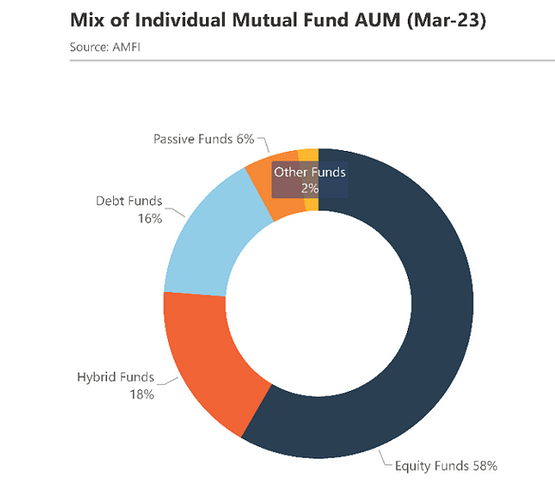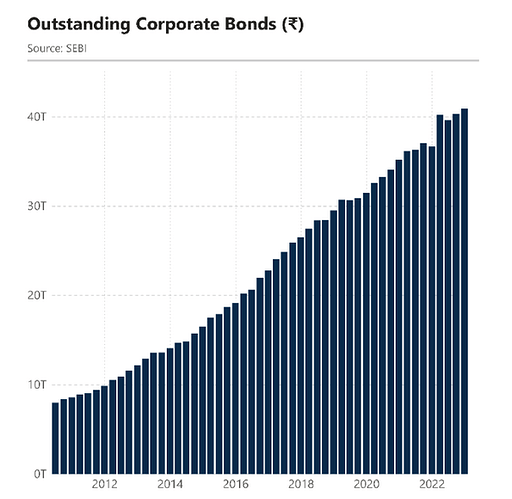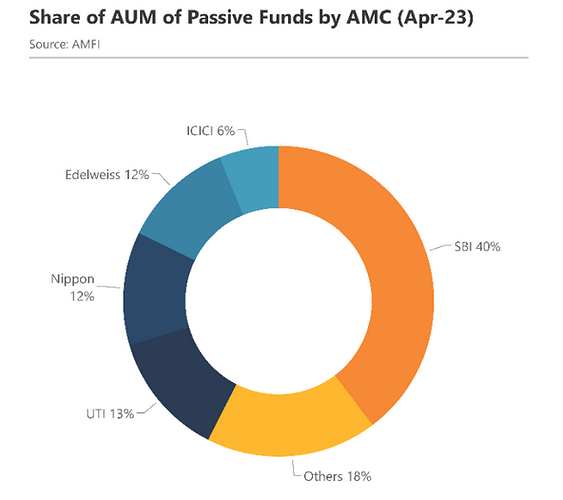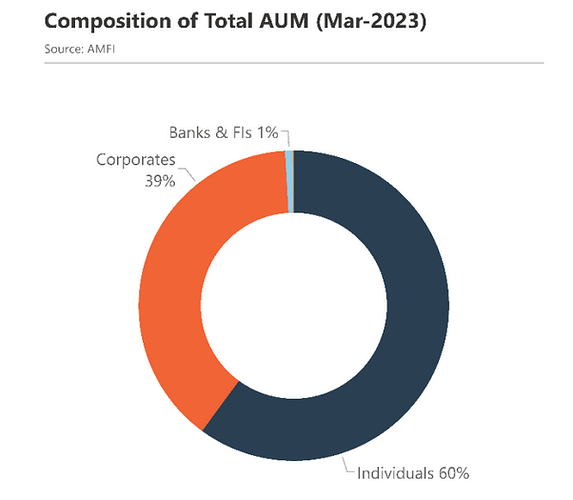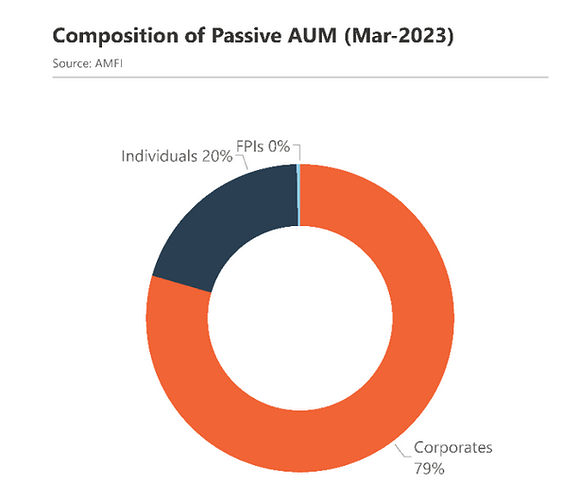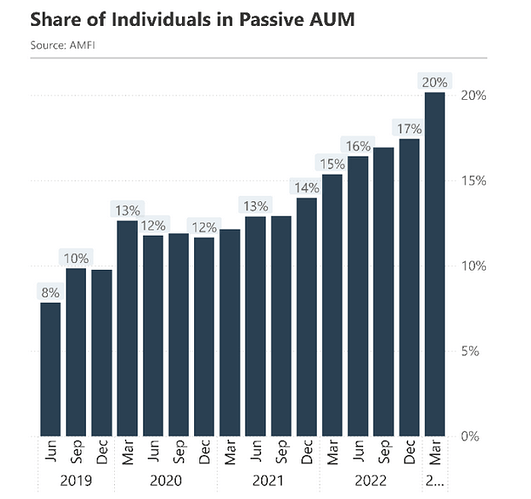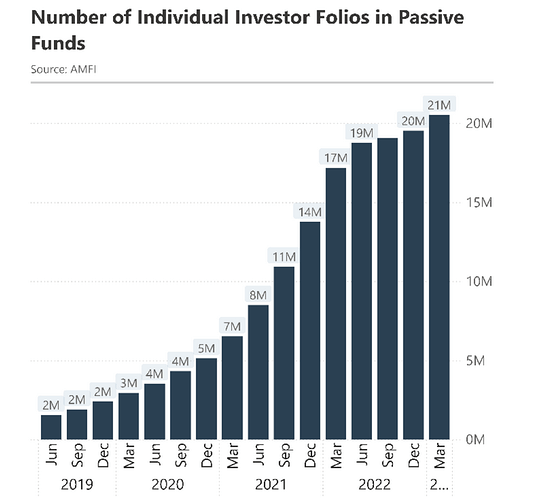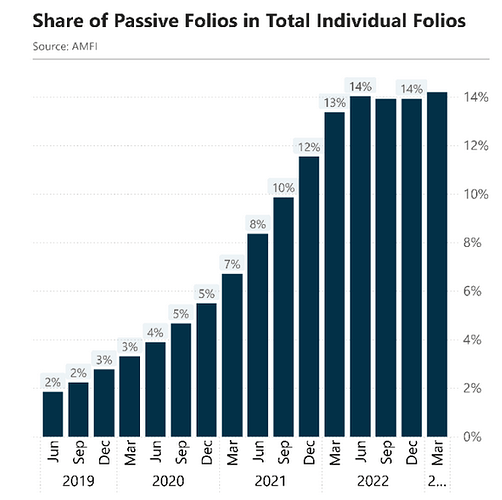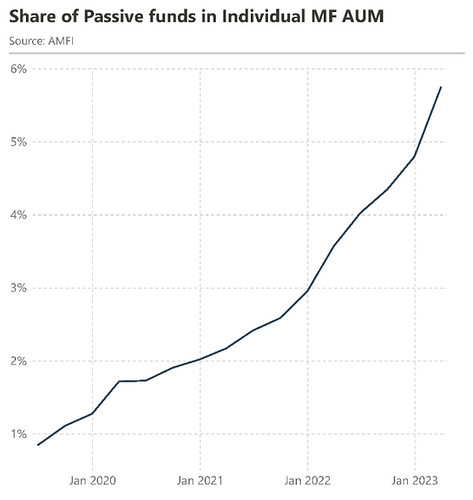IndiaDataHub shared a thematic Report on Passive funds with lots of interesting data points and charts. Here are some key highlights:
Key driver behind growth of passive funds
-
In the industry dominated by active funds, passive funds have gained significant traction in the last few years mainly due to EPFO.
-
Historically, the EPFO primarily invested in government securities and highly rated corporate bonds. However, in 2015, it made the decision to allocate 5% of its annual flows to passive schemes of mutual funds. Overtime, this allocation has gradually increased to its current level of 15%.
Net Inflows - Active and Passive Funds
-
During FY23, passively managed schemes witnessed net inflows of just over ₹1500bn, while actively managed funds experienced net outflows.
-
Cumulatively, over the past four years, actively managed funds received net inflows of approximately ₹2,200 billion, whereas passively managed funds received nearly double that amount, around ₹4,000 billion.
AUM of Passive Funds
- From April 2019 till April 2023, the total AUM of all passive schemes has jumped nearly five times from ₹1,400 billion to just under ₹7,000 billion.
Share of Passive AUM in Total AUM
-
Compared to 5% four years ago,Passive funds now account for more than 1/6th of the total AUM of the mutual fund industry,
-
Active funds managed by the industry have grown by less than 50% in the last four years. Therefore,almost a third of the increase in industry AUM in the last four years is attributed to passive Funds.
ETFs and Index funds - Inflows
-
Between FY20 and FY21, index funds received net inflows of just under ₹100 billion, while ETFs received net inflows over ten times that amount, at almost ₹1,100 billion.
-
However, in the past two years, index funds have attracted inflows equivalent to ETFs, totaling approximately ₹1,400 billion. Notably, in FY23, index funds received 50% more inflows than ETFs, with₹960 billion compared to ₹600 billion for ETFs.
Passive funds - Composition of AUM
- As of April 2023, approximately 70% of passive assets were invested in equity schemes tracking equity indices. About 25% of the assets were allocated to fixed income securities, and around 4% were invested in commodities, primarily Gold.
Flows into Corporate Bonds
- In the last decade, the value of outstanding corporate bonds has more than tripled, growing faster than the bank credit.
AMCs - Passive funds AUM share - Largely concentrated
- Top 5 fund houses managE over 80% of the total passive assets. SBI, with the largest passive AUM, oversees almost 40% of the total assets, largely due to the EPFO’s ETF investments being channeled through SBI’s ETFs. UTI ranks second in terms of AUM and manages nearly 13% of the total passive funds.
Composition of Total AUM and Passive AUM
- While individuals (both retail and HNIs) held 60% of the total assets of the mutual fund industry as of March 2023, institutions accounted for nearly 80% of the passive AUM.
Passive AUM - Share of Individuals
- Reflecting a significant shift in recent years, the share of individuals in total passive funds has grown from 8% to current levels of 20% now in 4 years.
- The increased participation of individuals in passive funds can be better understood by examining the growth in the number of folios. The number of individual folios under various passive schemes have increased tenfold in the last four years, surpassing 20 million at present.
- In terms of absolute numbers, the fiscal year 2022-23 alone witnessed the addition of almost 3.5 million folios, representing a 20% growth during the year. For reference, overall individual folios across all categories grew by 12% in FY23.
Share of Passive Folios
- Individual investor folios in passive funds accounted for slightly over 14% of all individual folios. Two years ago, as of March 2021, this share was less than 7%, and three years ago, in March 2020, the share was just over 3%.
Share of Passive funds in individual MF AUM - Long way to go
- In terms of AUM however, passive funds still constitute a relatively small portion of individual mutual fund portfolios. As of March, passive funds accounted for only 6% of the total mutual fund assets held by individuals.
